2013
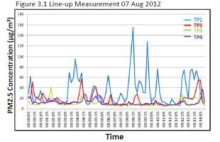
New WKC Publication: “Designated Smoking Areas in Streets Where Outdoor Smoking is Banned”
A new publication prepared by the WHO Kobe Centre, “Designated Smoking Areas in Streets Where Outdoor Smoking is Banned”, was published by the Kobe Journal of Medical Sciences.
Although Japan has been a signatory to the Framework Convention on Tobacco Control since 2004, progress in translating the recommendations into national policy has been limited. Globally, outdoor smoking bans cover outdoor dining areas, beaches, public parks, schools, etc. In Japan, most of existing outdoor smoking bans allow designated smoking areas (DSAs) in the no-smoking zones, thus limiting protection from second-hand smoke (SHS). The study examined the impact of DSAs on air quality in the areas of Kobe City where such ordinance is in force. Air quality measurements were conducted near two DSAs in August 2012 by using personal aerosol monitors.

WKC Publication: “Inequalities in noncommunicable disease mortality in the ten largest Japanese cities”
A new publication prepared by the WHO Kobe Centre, “Inequalities in noncommunicable disease mortality in the ten largest Japanese cities”, has just been published by the Journal of Urban Health.
The burden of noncommunicable diseases and social inequalities in health among urban populations is becoming a common problem around the world. This phenomenon is further compounded by population ageing. Japan faces the task of maintaining its high level of population health while dealing with these challenges. This study focused on the ten largest cities in Japan and, using publicly available administrative data, analyzed standardized mortality ratios to examine inequalities in relative mortality levels due to major noncommunicable diseases at both city and subcity levels.
- Kano, M, Hotta, M, Prasad, A. Inequalities in noncommunicable disease mortality in the ten largest Japanese cities. Journal of Urban Health, 2013, DOI: 10.1007/s11524-013-9808-9.
- This article is now available as 'Online First' on SpringerLink:
- The final publication will be available at Springer Link:
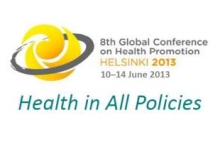
8th Global Conference on Health Promotion (8GCHP)
The 8th Global Conference on Health Promotion (8GCHP) was held in Helsinki, Finland, from 10 to 14 June 2013. The Conference has convened every few years since it was first organized in Ottawa, Canada in 1986, and it is the key event to advance the health promotion field, and presents an important opportunity for the WHO Kobe Centre (WKC) to share its work in urban health and intersectoral action for health.
WKC supported the conference through organizing 3 parallel sessions. All sessions were 1.5 hours, including two presentations, and time for questions and discussion with the audience.
Impact Assessment as a tool for implementing HiAP
10 June 2013 (16:15-17:45)
This session addressed the potential utility of Impact Assessment as a tool for policy makers to implement HiAP. Building upon the outcomes of a recent expert consultation on the topic hosted by WHO, this session took a closer look at how the health community can contribute to strengthening the attention to impacts on health through a focus on the determinants of health across various sectors.
The session was chaired by Dr Reiner Fehr, Professor, Department of Public Health, University of Bielefeld, Germany.
Presentations
- Use of impact assessments in achieving HiAP
Dr Rajiv Bhatia, San Francisco, United States - Institutionalized health impact assessment: How to make most use of it?
Dr Decharut Sukkumnoed, Kasesart University, Thailand
Health Promotion and Urban Planning
11 June 2013 (11:00-12:30)
Urban planning is a powerful tool for policy-makers to improve the health of urban populations and ensure health equity in cities. The session aimed to promote intersectoral policies and activities for health promotion and urban planning sectors and to share experiences and practical tools on healthy urban planning.
This session was chaired by Dr Keiko Nakamura, Professor, International Health, Division of Public Health, Graduate School of Tokyo Medical and Dental University, Japan.
Presentations
- Chair's introduction
- Process of urbanisation and health dynamics
Professor Gérard Salem, Université Paris Ouest Nanterre La Défense/ IRD, France - Healthy urban planning in Seoul
Dr Sohyun Park, Seoul National University, Republic of Korea
Local government as a key player in implementation of HiAP
11 June 2013, (11:00-12:30)
Local governments can play a pivotal role in improving health and health equity as they often have direct influence on a wide range of urban health determinants, and are also advantaged in terms of proximity to citizens and potential participation. This session examined how HiAP is implemented, and discusses the challenges and opportunities for HiAP at the local government level. Examples of local governments that have successfully implemented HiAP were shared.
The session was chaired by Dr Ling Chew, Director, Research & Strategic Planning, Health Promotion Board, Singapore.
Presentations
- Local government as an arena for HiAP
Dr Asa Cristina Laurell, CAESS, Mexico - Intersectoral/HiAP approaches to recusing health risks in New York City and California
Dr Lynn Silver, Sonoma County, California, United States
Innovating financing for health promotion
12 June 2013 (17:00-18:30)
Presentation by Mr Alex Ross, Director, WKC:
In the past decade, WHO and its development partners have developed different strategies for global innovative financing for health for various health conditions, as well as strategies to spur intersectoral action for health. The presentation introduced lessons from past global initiatives as well as to rethink how global initiatives can be tailored nationally to support health promotion goals. These include the Global Fund to Fight AIDS, TB and Malaria; GAVI; the Solidarity Tobacco Contribution concept; the UNITAID airline tax levy; the IFFim; Debt-2-Health; Product Red; Financial Transaction Tax, and others. There are also several examples of national innovative financing strategies and mechanisms that can support health. These include the use of tobacco and alcohol taxes (for example in supporting national health promotion foundations), taxes on mobile phone use, remittances from persons living abroad, as well as various resources mobilized by local nongovernmental organizations and potentials for appropriate partnering with private sector.
8GCHP: Health in All Policies (HiAP)
Date: 10-14 June 2013
Venue: Finlandia Hall, Helsinki, Finland
Co-hosts:
World Health Organization (WHO)
Ministry of Social Affairs and Health, Finland
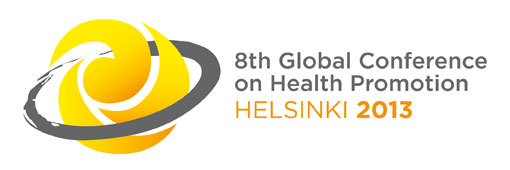
The 8th Global Conference on Health Promotion (8GCHP) was held in Helsinki, Finland, from 10 to 14 June 2013. The Conference has convened every few years since it was first organized in Ottawa, Canada in 1986, and it is the key event to advance the health promotion field, and presents an important opportunity for the WHO Kobe Centre (WKC) to share its work in urban health and intersectoral action for health.
The Conference was co-organized by the World Health Organization (WHO) and the Ministry of Social Affairs and Health of Finland (MSAH). Around 800 participants attended the Conference including heads of state and cabinet ranking officials. The theme of the Conference was “Health in All Policies” (HiAP), with a focus on its practical implementation.
The WHO Kobe Centre was a core part of organizing the Conference. WKC officials presented on innovative financing for health promotion, and organized three sessions to discuss impact assessment to promote intersectoral action for health, local government and HiAP, and health promotion and urban planning.

Conference aimed
- To facilitate exchange of experiences and lessons learnt and give guidance on effective mechanisms for promoting intersectoral action
- To review approaches to address barriers and build capacity for implementing Health in All Policies (HiAP)
- To identify opportunities to implement the recommendations of the Commission on Social Determinants of Health through HiAP
- To establish and review economic, developmental and social case for investing in HiAP
- To address the contribution of health promotion in the renewal and reform of primary health care
- To review progress, impact and achievements of health promotion since the Ottawa Conference
Who attended
Participation was by invitation only. Neary 900 participants attended the conference, representing different levels of Member State governments, UN and international organizations, civil society and international financial institutions and foundations representing health and other relevant sectors.

World No Tobacco Day, 31 May 2013 – Ban tobacco advertising, promotion and sponsorship
Every year, on 31 May, WHO and partners everywhere mark World No Tobacco Day, highlighting the health risks associated with tobacco use and advocating for effective policies to reduce tobacco consumption. Tobacco use is the single most preventable cause of death globally and is currently responsible for killing one in 10 adults worldwide.
The theme for World No Tobacco Day 2013 is: ban tobacco advertising, promotion and sponsorship.
The Day presents an opportunity for government, industry, and civil society stakeholders to consider what they can do to prevent tobacco use, and what specifically they can do to ban advertising, promotion, and sponsorship of tobacco products.
A comprehensive ban of all tobacco advertising, promotion and sponsorship is required under the WHO Framework Convention for Tobacco Control (WHO FCTC) for all Parties to this treaty within five years of the entry into force of the Convention for that Party. Evidence shows that comprehensive advertising bans lead to reductions in the numbers of people starting and continuing smoking. Statistics show that banning tobacco advertising and sponsorship is one of the most cost-effective ways to reduce tobacco demand and thus a tobacco control “best buy”.
Goals
The global tobacco epidemic kills nearly six million people each year, of which more than 600 000 are non-smokers dying from breathing second-hand smoke. Unless we act, the epidemic will kill more than eight million people every year by 2030. More than 80% of these preventable deaths will be among people living in low- and middle-income countries.
The ultimate goal of World No Tobacco Day is to contribute to protect present and future generations not only from these devastating health consequences, but also against the social, environmental and economic scourges of tobacco use and exposure to tobacco smoke.
- spur countries to implement WHO FCTC Article 13 and its Guidelines to comprehensively ban tobacco advertising, promotion and sponsorship such that fewer people start and continue to use tobacco; and
- drive local, national and international efforts to counteract tobacco industry efforts to undermine tobacco control, specifically industry efforts to stall or stop comprehensive bans on tobacco advertising, promotion and sponsorship.

Please see the WHO websites for more information on tobacco.
Link to: WHO World No Tobacco Day 2013 website
World No Tobacco Day 2013 Posters

Implementation of Urban HEART
Under the City Wide Investment Plan in the Philippines, Urban HEART has been recommended as the tool for assessing and monitoring health in cities. Urban HEART was piloted in 7 cities across the country in 2008-09 with cities setting up ordinances to sustain the application of the tool.
Cities which piloted Urban HEART in Philippines
- Davao
- Naga
- Olongapo
- Parañaque
- Tacloban
- Taguig
- Zamboanga
Evaluation of Urban HEART
With the cooperation of respective authorities in Indonesia, Islamic Republic of Iran, Kenya, Mongolia, Philippines, Sri Lanka and Vietnam, an independent evaluation on the process of piloting Urban Health Equity Assessment and Response Tool (Urban HEART) was conducted for 15 cities in 2011–2012.
These independent evaluation reports will serve as a useful resource for stakeholders who want to learn from the experience of cities in different contexts in utilizing the tool to address health inequities. The evaluation will also provide important lessons for WHO to better support cities in implementing Urban HEART.
- Urban HEART Evaluation Report Indonesia
- Urban HEART Evaluation Report Iran
- Urban HEART Evaluation Report Kenya
- Urban HEART Evaluation Report Mongolia
- Urban HEART Evaluation Report Philippines
- Urban HEART Evaluation Report Sri Lanka
- Urban HEART Evaluation Report Viet Nam
Urban HEART around the world

Nakuru, Kenya
Inequities in access to basic services and infrastructure was revealed in the process of piloting Urban HEART in Nakuru, Kenya

Tehran, Iran
Tehran, Iran, has conducted a survey on Urban HEART indicators which is representative of its 22 municipalities, enabling an in-depth analysis of inequities
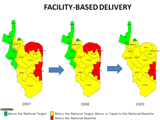
Parañaque city, Philippines
In Parañaque city, Philippines, Urban HEART results enabled municipal authorities to identify priorities, not only in health, but also in related determinants of health.

Visit of Dalian City Officials to WHO Kobe Centre 25–26 April 2013
In collaboration with the Government of Japan’s Ministry of Health, Labour and Welfare, the Japan International Cooperation of Welfare Services and WHO Country Office in the People’s Republic of China, WHO Kobe Centre received the fellowship visit of four officials from Dalian City, China on 25-26 April 2013.
During the two-day visit, WHO Kobe Centre provided the Chinese officials with an overview of the Centre’s research work, specifically in Intersectoral Action (ISA) for Health: Smoke-free cities, healthy urban planning and public health, health emergency management and a brief training on Urban Health Equity Assessment and Response Tool (Urban HEART). The guests were also accompanied by WKC to the Great Hanshin-Awaji Earthquake Memorial.
The visit was concluded with an assurance from both parties to continue communicating and exploring future research projects based on mutual interest.
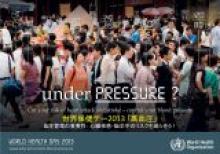
WKC Forum report “Control your blood pressure: for your healthy life” in commemoration of the World Health Day
In commemoration of this year's World Health Day, the WHO Centre for Health Development (WHO Kobe Centre - WKC) organized a forum “Control your blood pressure: for your healthy life” in Kobe on 7 April 2013.
Every year, World Health Day is celebrated on 7 April to mark the anniversary of the founding of the World Health Organization (WHO) in 1948. World Health Day is a global campaign, inviting everyone – from global leaders to the public in all countries – to focus on a single health challenge with global impact. The theme changes each year.
On the World Health Day itself, 7 April 2013, WKC and local partners focused on the global problem of high blood pressure. Though it affects one in three adults worldwide, high blood pressure remains largely hidden. Many people do not know they have high blood pressure because such does not always cause symptoms. As a result, it leads to more than nine million deaths every year, including about half of all deaths due to heart disease and stroke.

More than 40 participants came to the WKC forum from the general public and local governments to learn the risks of and to know how to prevent and control high blood pressure. The 90-minute forum highlighted the importance of promoting healthy lifestyle – reducing salt intake, having regular exercise and checking blood pressure on regular basis.
Dr Yoshio Iwashima, National Cerebral and Cardiovascular Center, presented on hypertension from a medical doctor’s point of view. He defined hypertension when systolic blood pressure is equal to or above 140 mm Hg and/or a diastolic blood pressure equal to or above 90 mm Hg. Yet, in Japan, he mentioned that the blood pressure is considered to be raised or high when systolic blood pressure is equal to or above 135 mm Hg and/or a diastolic blood pressure equal to or above 85 mm Hg if it is measured at home.
Dr Iwashima emphasized that high blood pressure could increase risks of heart attack, stroke and kidney failure. He also mentioned high blood pressure as a risk factor that may cause dementia. To prevent risks of high blood pressure, he stressed the importance to regularly check one’s blood pressure and to reduce salt intake as the primary prevention of heart diseases is through healthy diet and lifestyle. “It is also important to control daily stresses to reduce risks of high blood pressure”, he emphasized.
Professor Hatsumi Kanzaki, Research Institute of Nursing Care for People and Community, University of Hyogo, presented the prevention and control of high blood pressure through self-care. She stressed the importance to know each person’s blood pressure. Although it is important to take medication as prescribed by a doctor, medication can be stopped in due course, based on a doctor’s advice, if high blood pressure has already been controlled and the patient is young, keeps a moderate body weight, stops drinking alcohol, has low salt intake, stops smoking or/and has no other concomitant sickness. Although it is normal to see the blood pressure being raised as one ages, Professor Kanzaki stressed the importance of having healthy diet and life habits to prevent and reduce risks of high blood pressure.
 Following the presentations, Mr Yukio Motoki, Adviser for Kobelco Steelers (Kobe Steel Rugby Club), discussed hints and tips in order to have a healthy diet and lifestyle so as to enjoy sports and reduce risks of developing high blood pressure. He advised the audience to have enough water and minerals during exercise. He also mentioned the importance of stress control and advised the audience not to force themselves (Japanese context) to follow steps to reduce blood pressure as it may cause more stress. “Living a healthy and active lifestyle is key”, he stressed.
Following the presentations, Mr Yukio Motoki, Adviser for Kobelco Steelers (Kobe Steel Rugby Club), discussed hints and tips in order to have a healthy diet and lifestyle so as to enjoy sports and reduce risks of developing high blood pressure. He advised the audience to have enough water and minerals during exercise. He also mentioned the importance of stress control and advised the audience not to force themselves (Japanese context) to follow steps to reduce blood pressure as it may cause more stress. “Living a healthy and active lifestyle is key”, he stressed.
After the forum, “Machi no Hokenshitsu”(town health room) event was held at the venue in cooperation with the Hyogo Nursing Association. Most of forum participants joined in the blood pressure check, and actively discussed their blood pressure with and received individual health advises by nurses from the Hyogo Nursing Association.
Presentations
- "Hypertension prevention and control: for your better life" (Japanese)
Dr Yoshio Iwashima, Division of Hypertension and Nephrology
National Cerebral and Cardiovascular Center - "Hypertension prevention and control: for your care/effort at home" (Japanese)
Dr Hatsumi Kanzaki, Research Institute of Nursing Care for People and Community
WHO Collaborating Centre for Nursing in Disasters and Health Emergency Management, University of Hyogo
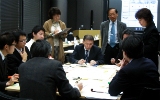
WHO Kobe Centre Offered the Leadership Training Course for Urban Emergencies
WHO Kobe Centre pilot tested its newly developed training course for city health emergency managers last 24 February at the Kobe City Emergency Operations Centre. There were 20 participants from Hyogo Prefecture who attended the training course entitled: City Leadership in Health Innovations and Technologies in Emergencies otherwise known as City LHITE.
The course aims to provide health and health related professionals working in cities/urban areas involved in emergencies and disasters with knowledge and understanding of the concepts, principles and strategies of urban health emergency management and the utilization of innovations and technologies in disaster operations. The course is composed of three modules covering: health emergency management principles, leadership in health emergencies and innovations/technologies in emergencies. The course is heavy on group work to ensure a participatory approach to learning and to ensure sharing of actual field experiences of the trainees. A training package was provided to the participants which contains technical input on the various topics.
Experts from national and prefectural agencies provided inputs on the latest approaches to health emergencies in Japan like the Emergency Medical Information System (EMIS), Disaster Medical Assistance Team (DMAT) training and the public health centres leadership course . They provided the valuable case studies on experiences from recent emergencies in Japan that the participants could use to deepen their learning from the new training course.
The City LHITE training was developed through a rigorous needs assessment and review of existing training courses in health emergencies. There is no known training course on leadership for urban health emergencies and also in the area of innovations and technologies. In recent major emergencies, there has been a greater realization of utilizing technologies and innovations to deliver faster and more effective health response. The development of the training course was supported by the Hyogo Earthquake Memorial 21st Century Research Institute (HEM21) and in collaboration with the Disaster Reduction and human Renovations Institution (DRI), Hyogo Emergency Medical Centre, and the the Department of Global Health, Medicine and Welfare of the Nagasaki University Graduate School of Biomedical Sciences.
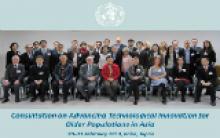
Consultation on Advancing Technological Innovation for Older Populations in Asia Kobe, Japan
WHO Centre for Health Development in Kobe hosted the first Consultation on Advancing Technological Innovations for Older Populations in Asia.
Ageing has now become one of the world’s greatest challenges and hence prime ground for innovations. A WHO priority is to enable aging population to remain healthy, active and independent for as long as possible. Medical and Assistive devices are important tools to help achieve these goals.
With initial funding from the Japanese Ministry of Health, Labour and Welfare, WHO has commissioned tree initial systematic reviews of the needs of older people for medical and assistive devices in height WHO Western Pacific Regional Office (WPRO) countries.
This consultation assembled more than 35 participants representing academia, industry, patients, communities, NGO and experts to discuss the work in progress of the systematic reviews, the known priority needs of older populations for medical and assistive devices, gather additional gaps knowledge on these needs, means how best to use this information to drive further technological and social innovation to create solutions.
After two days of consultation the comity identified the issues to consider advancing technological innovation along with addressing maximizing affordability, removing barriers to innovation and tailoring for individual country contexts and needs in the Asian-Western Pacific Region.
This meeting is paving the way for further consultation, normative work and scientific research to improve knowledge as well as service delivery of health related devices for elderly in Asia and all over the World.

Former Director-General of WHO dies -- health contributions remembered
Dr Hiroshi Nakajima, former Director-General of WHO, died Saturday, 26 January, in Poitiers, France, after a short illness. He was 84.
Following a career of research in neuropharmacology, Dr Nakajima joined WHO in 1974, where he helped develop the concept of essential medicines. He served as Director of the WHO Regional Office for the Western Pacific from 1978 to 1988, and as the Organization's fourth Director-General, from 1988 to 1998.
Many of WHO's most successful current programmes owe a debt to his work during those years. Some programmes connected to his leadership include:
- DOTS (directly-observed treatment, short course), the strategy for TB care and control that WHO started promoting in 1995;
- the use of vector control and bednets to prevent malaria;
- the Integrated Management of Childhood Illness Initiative; and
- the expansion of the global programme for childhood immunization.
Among his many achievements, Dr Nakajima initiated the creation of the WHO Centre for Health Development in Kobe which was endorsed by the WHO Executive Board in 1995.
”For all of these initiatives, the impact on people's health mattered most to him," said Dr Margaret Chan as she announced the news to WHO's Executive Board meeting currently underway in Geneva. "One of Dr Nakajima's greatest passions was to see polio defeated. We are doing so now, for many good reasons. Let these efforts also be a tribute to his memory."
His contribution to public health was commemorated by the Member States, civil society, staff and others attending the Executive Board with a minute of silence. Dr Nakajima is survived by his wife, Martha Nakajima, and two sons.


